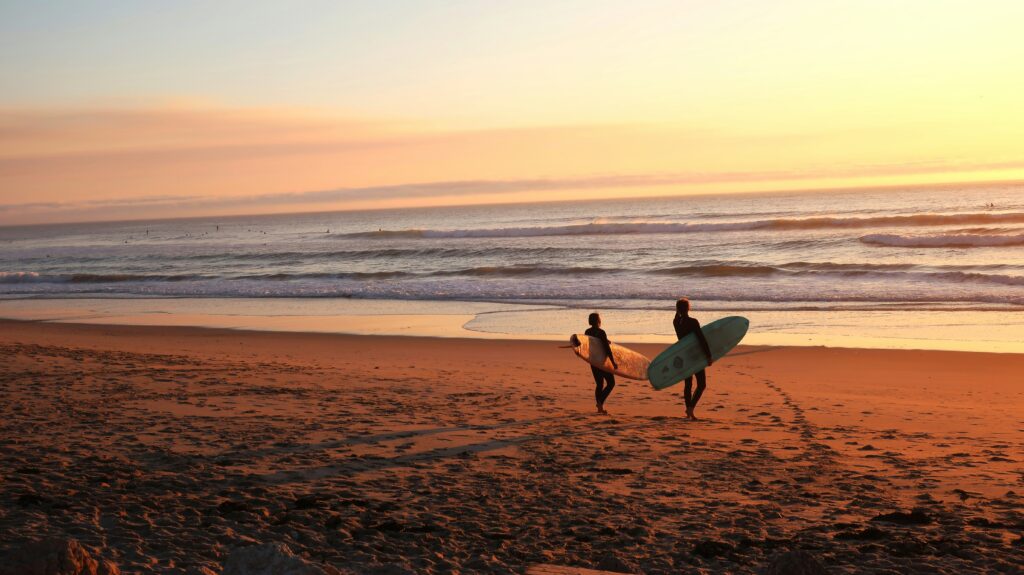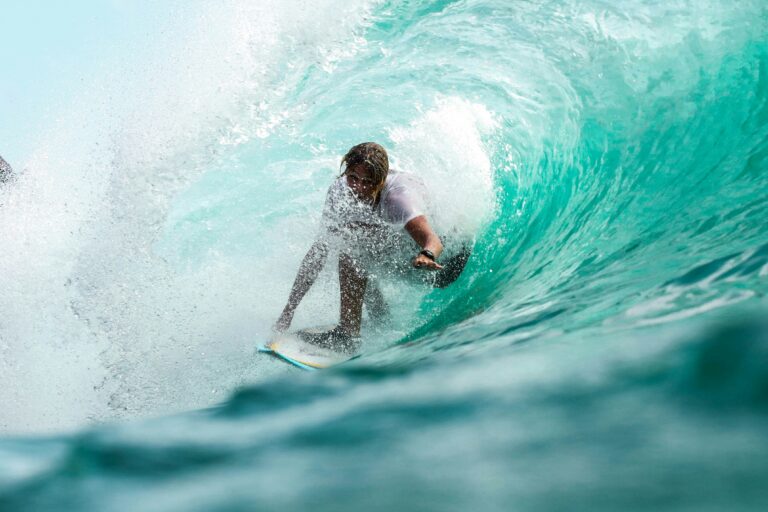Surfing is more than just a sport; it’s a way of life for many enthusiasts around the world. From riding the waves to feeling the rush of adrenaline, surfing offers an unparalleled experience in the realm of water sports. However, for beginners, the idea of stepping onto a surfboard and navigating the waves can be daunting. Fear not! This beginner’s guide is here to equip you with the essential tips and techniques to get started on your surfing journey. Whether you’re a complete novice or have dabbled a bit, this guide will help you catch your first wave and begin your exciting adventure in the world of surfing.
Choosing the Right Surfboard
Understanding Your Skill Level
Choosing the right surfboard starts with understanding your skill level. Beginners typically start with longer and wider boards, often called “longboards” or “funboards.” These boards offer more stability, making it easier to catch waves and balance while learning the basics. As you progress, you can transition to shorter boards that offer greater maneuverability but require more skill to ride effectively.
Consider Your Body Type
Your body type also plays a crucial role in selecting the right surfboard. Taller or heavier individuals may need larger boards for adequate flotation, while smaller individuals might prefer smaller boards for easier maneuvering. Additionally, consider factors like your fitness level and agility, as these can influence your ability to control different board sizes and shapes.
Matching Board to Wave Conditions
Another important aspect of choosing the right surfboard is matching it to the prevailing wave conditions. Different boards perform better in specific types of waves. For example, longer boards are ideal for small, mushy waves common in beginner-friendly surf spots, while shorter boards excel in steeper, more powerful waves found in intermediate to advanced breaks. Understanding the typical wave conditions at your local surf spot can guide your board selection.
Seeking Expert Advice
If you’re unsure about which surfboard to choose, don’t hesitate to seek advice from experienced surfers or knowledgeable professionals at surf shops. They can assess your skill level, body type, and local wave conditions to recommend the most suitable options. Additionally, many surf shops offer board rental services, allowing you to try out different boards before making a purchase decision.
Budget Considerations
While it’s tempting to splurge on the latest high-performance surfboard, consider your budget constraints when making a purchase. Fortunately, there are quality surfboards available at various price points, including both new and used options. If you’re on a tight budget, exploring the secondhand market or opting for entry-level models can help you find a suitable board without breaking the bank. Remember that the best surfboard for you is one that matches your skill level, body type, and wave conditions, regardless of its price tag.
Learning to Paddle
Mastering the Prone Position
Learning to paddle effectively is essential for navigating the lineup, catching waves, and maneuvering your surfboard. Start by mastering the prone position, lying flat on your stomach atop the board with your arms extended forward. Maintain a balanced position and use your arms to paddle efficiently through the water.
Timing and Coordination
Timing is crucial when paddling out through breaking waves or positioning yourself to catch a wave. Watch the sets and time your paddling efforts to coincide with the lulls between waves. Additionally, coordinate your paddling strokes with your body movements to maximize efficiency and minimize fatigue.
Using Proper Technique
Focus on using proper paddling technique to conserve energy and maintain momentum. Keep your arms straight and cup your hands to maximize surface area and propel yourself through the water more effectively. Avoid dragging your hands or arms in the water, as this creates unnecessary drag and slows you down.
Building Endurance and Strength
Paddling can be physically demanding, especially when faced with challenging conditions or long sessions in the water. Build endurance and strength through regular paddling practice and complementary exercises such as swimming, core workouts, and shoulder strengthening exercises. A strong and resilient paddling technique will enhance your overall surfing experience and allow you to stay out in the lineup longer.
Staying Safe in the Water
While mastering the art of paddling is essential for surfing, prioritizing safety should always be paramount. Familiarize yourself with surf etiquette, including right-of-way rules and proper lineup behavior, to avoid collisions and conflicts in the water. Additionally, be mindful of potential hazards such as rip currents, rocks, and other surfers, and always wear appropriate safety gear like a leash and sunscreen to protect yourself while enjoying the waves.

Mastering Techniques
Popping Up
Mastering the “pop-up” is a fundamental skill that allows surfers to smoothly transition from lying prone on their boards to standing upright, ready to ride the wave. The key to a successful pop-up lies in fluidity, balance, and timing. Here’s how to nail it:
Riding the Wave
Once you’ve successfully popped up and found yourself standing on your surfboard, the next step is to ride the wave with style and control. Riding the wave involves maintaining balance, positioning yourself correctly on the wave face, and harnessing its energy to stay in motion. Here are some tips to help you ride the wave like a pro:
Turning and Maneuvering
Turning and maneuvering your surfboard is essential for navigating the wave, adjusting your trajectory, and executing advanced maneuvers. Proper technique, weight distribution, and timing are crucial for effective turning and maneuvering. Here’s how to master this aspect of surfing:



